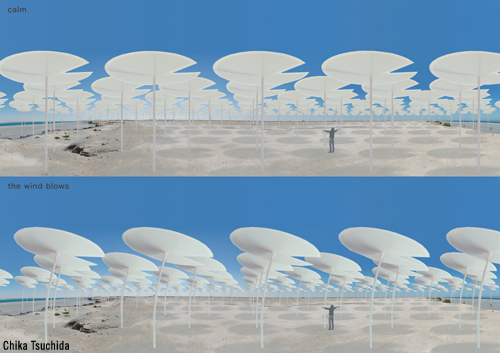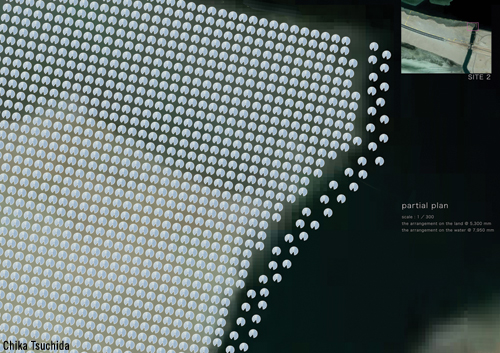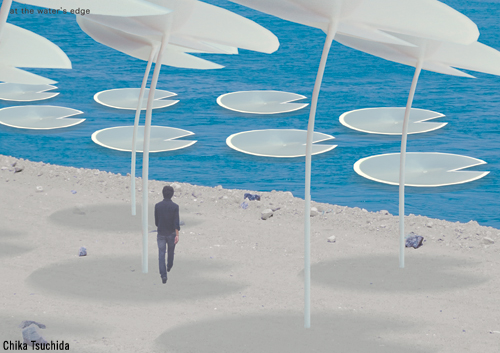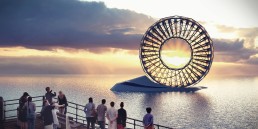Chika Tsuchida
Designed for Site #2 in Abu Dhabi, between Saadiyat Island and Yas Island.

Design Submission for the 2010 Land Art Generator Initiative Design Competition
Artist’s descriptive text:
Why does an artificial construction keep static? They persist in keeping static toward wind, rain, animals or human beings. Living nature reacts to external stimulation. Can we shake and breathe an artificial construction?

As the motif of the plant, I choose a lotus, one of a beautiful aquatic plant, and want to build an artificial lotus garden.
There are Organic Solar Cells on the surfaces of these lotus leaves, and they create electrical energy. Lotuses bend and wave in the wind. A stem of lotus keeps vertical. But when wind blows, it bends like a bamboo. TPE (Thermoplastic Elastomers) and stainless steel springs make this movement possible. The stems are hollow and house electrical wiring.
The leaves are also made of TPE, and water-proofed on the surface. They are as thin and as long as possible, and swing in wind and weight of rain. TPE is a recyclable and durable material that is fit for the harsh conditions of the site.
At the site under the water, lotus leaves float on the surface. These leaves don’t use stainless steel, and stand up via their buoyancy.

Organic Solar Cells are 1/10 the cost of common inorganic solar cells, require less embodied energy to produce and are non-toxic to the environment.
This lotus form has the merit in its construction: It doesn’t need to level without foundation, and it makes possible minimum ground level and maximum solar panel space.

An old Chinese proverb says “Lotus grows in the mud but never become muddy itself”. It is known as a symbol of virtue and pureness and is a suitable motif for a clean energy plant.
Related Posts
1 Comment
Add comment Cancel reply
This site uses Akismet to reduce spam. Learn how your comment data is processed.


[…] Land Art Generator Initiative Reageer […]